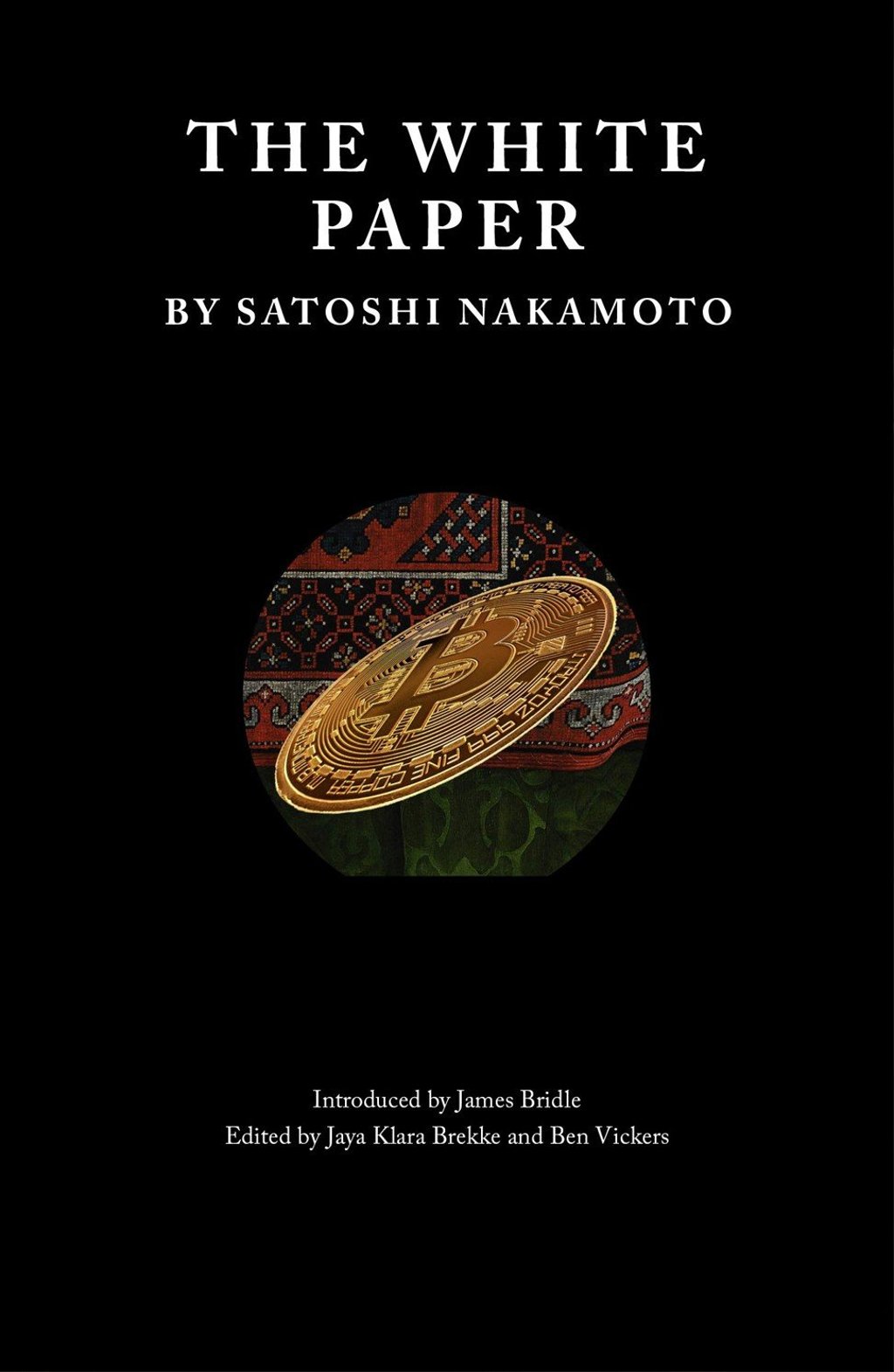Advertisement
Review | Bitcoin, blockchain and cryptocurrency explained by its ‘creator’ in The White Paper
- In the 10 years since bitcoin was introduced, fortunes have been made and lost, but many are confused about how it works
- The complex ideas behind blockchain and cryptocurrency are explained by the mysterious Satoshi Nakamoto and other experts
Reading Time:3 minutes
Why you can trust SCMP

The White Paper, by Satoshi Nakamoto, Ignota, 4/5 stars
Eight years ago, Visa, Mastercard and PayPal, which together dominated more than 97 per cent of the global market for payment services, cut off funding to WikiLeaks (people could still donate to the Ku Klux Klan, the English Defence League or Americans for Truth About Homosexuality).
The blockade, backed by Republican senators, was political. WikiLeaks had published Chelsea Manning’s material documenting US military drone strikes and civilian killings in Iraq; stopping the cash flow silenced Julian Assange’s outfit, albeit temporarily.
Advertisement
What could be done? Perhaps it was time for a cryptocurrency to stride from the proverbial phone booth, underpants over its tights, and save the day? After all, bitcoin’s philosophy was that it would cut out the middleman, whether state functionary or corporate lackey, and realise a radical future in which, for instance, Afghan women, prohibited from opening bank accounts, might work and get paid – in bitcoin.

Advertisement
Certainly, in December 2010 there was much enthusiasm among the so-called cypherpunks for WikiLeaks to link to bitcoin on its website for donations. In a fascinating thread on bitcointalk.org reproduced in The White Paper by Satoshi Nakamoto, Mike Gogulski wrote: “Screw big business.
Advertisement
Select Voice
Choose your listening speed
Get through articles 2x faster
1.25x
250 WPM
Slow
Average
Fast
1.25x